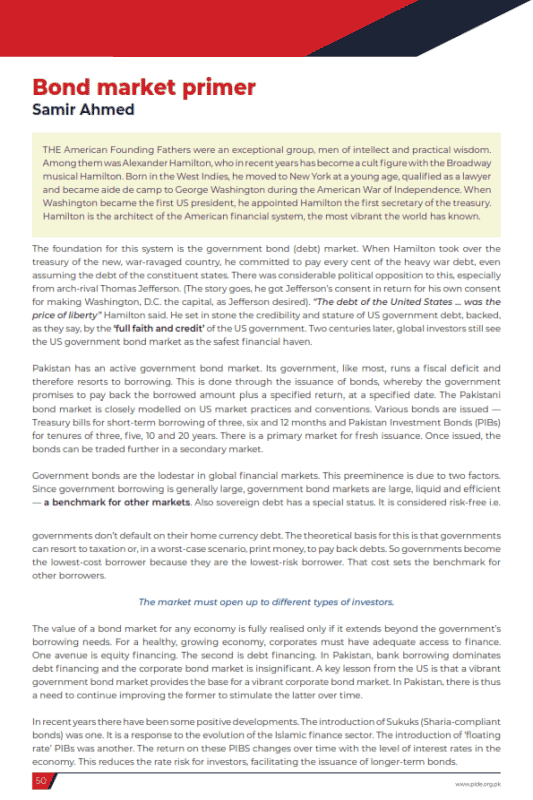
Pakistan Institute of Development Economics
- Home
Our Portals
MenuMenuMenuMenuMenuMenuMenu - ResearchMenuMenuMenuMenuMenuMenuMenu
- Discourse
- The PDR
- Our Researchers
- Academics
- Degree Verification
- Thesis Portal
- Our Portals
Bond market primer
The foundation for this system is the government bond (debt) market. When Hamilton took over the treasury of the new, war-ravaged country, he committed to pay every cent of the heavy war debt, even assuming the debt of the constituent states. There was considerable political opposition to this, especially from arch-rival Thomas Jefferson. (The story goes, he got Jefferson’s consent in return for his own consent for making Washington, D.C. the capital, as Jefferson desired). “The debt of the United States … was the price of liberty” Hamilton said. He set in stone the credibility and stature of US government debt, backed, as they say, by the ‘full faith and credit’ of the US government. Two centuries later, global investors still see the US government bond market as the safest financial haven. Pakistan has an active government bond market. Its government, like most, runs a fiscal deficit and therefore resorts to borrowing. This is done through the issuance of bonds, whereby the government promises to pay back the borrowed amount plus a specified return, at a specified date. The Pakistani bond market is closely modelled on US market practices and conventions. Various bonds are issued — Treasury bills for short-term borrowing of three, six and 12 months and Pakistan Investment Bonds (PIBs) for tenures of three, five, 10 and 20 years. There is a primary market for fresh issuance. Once issued, the bonds can be traded further in a secondary market.



